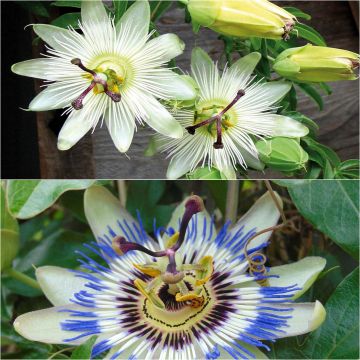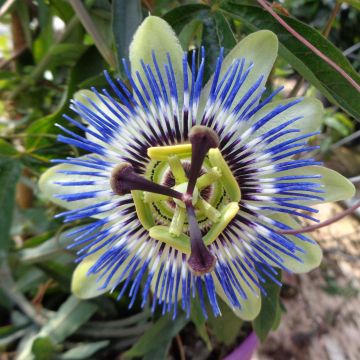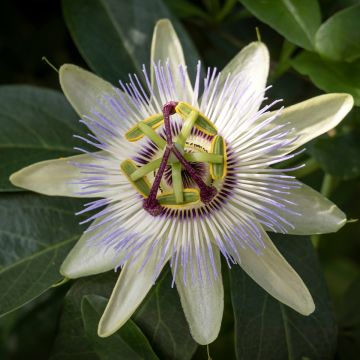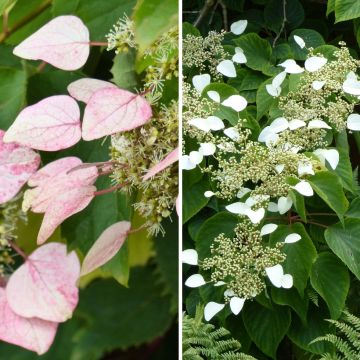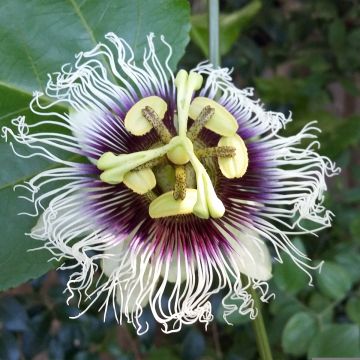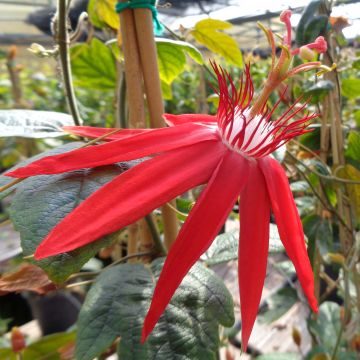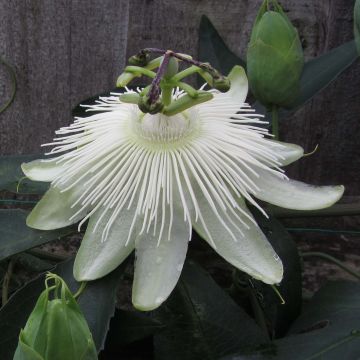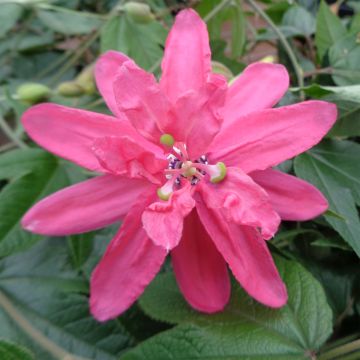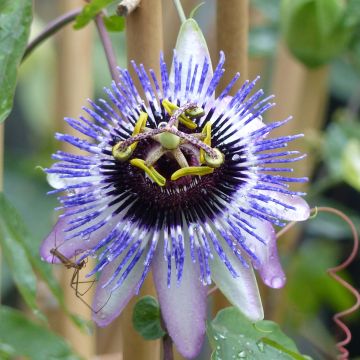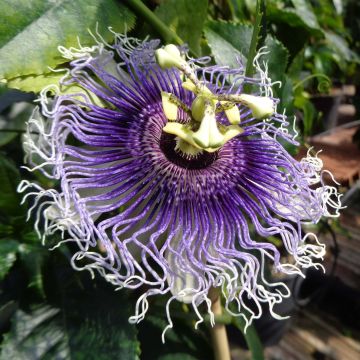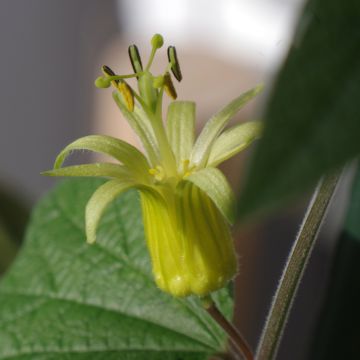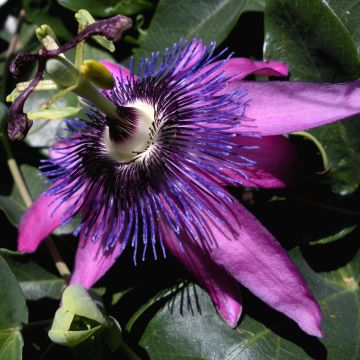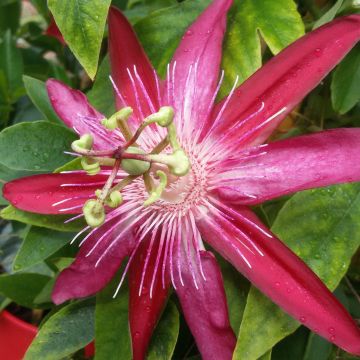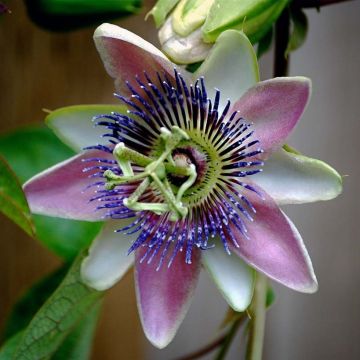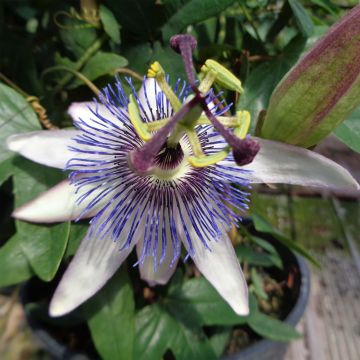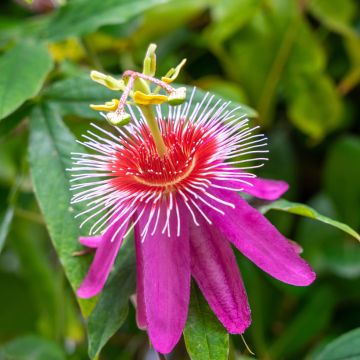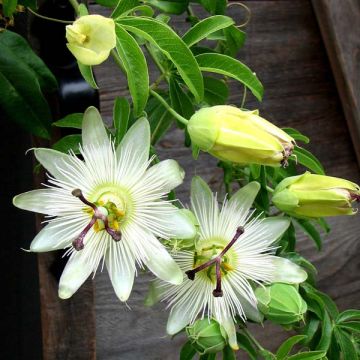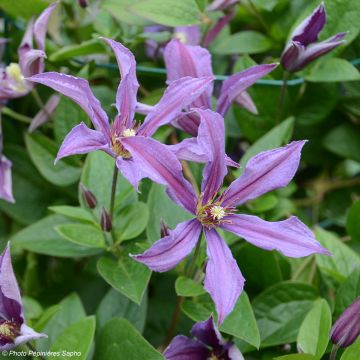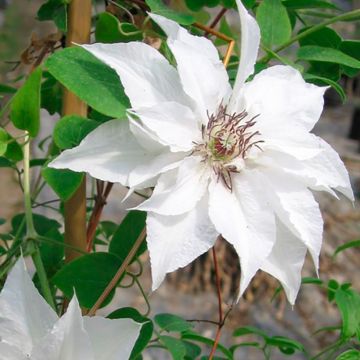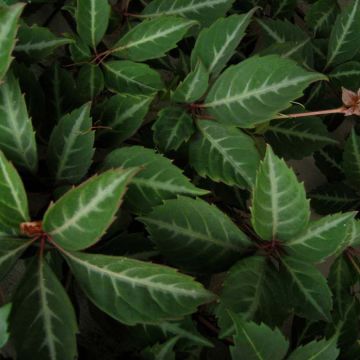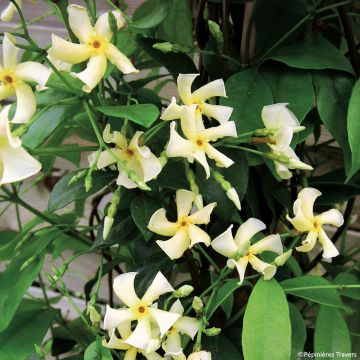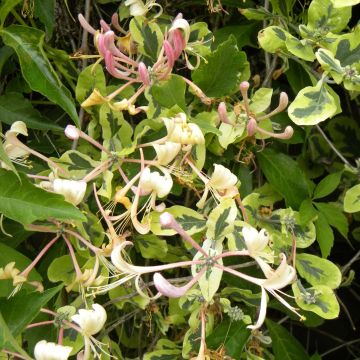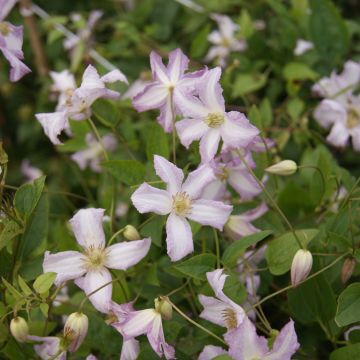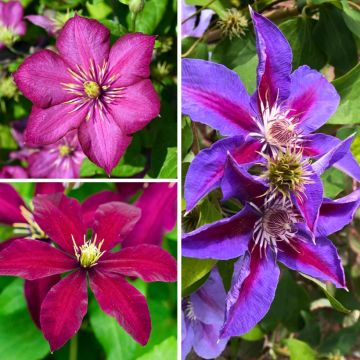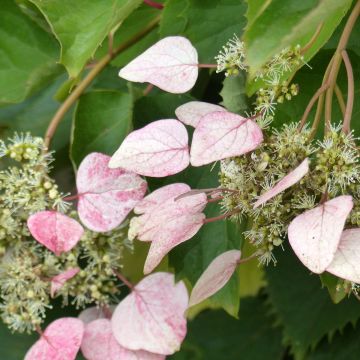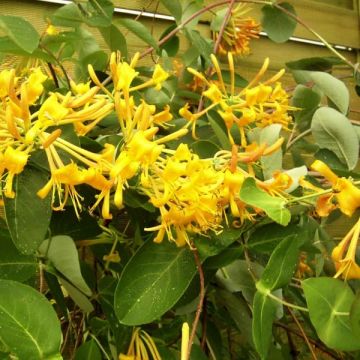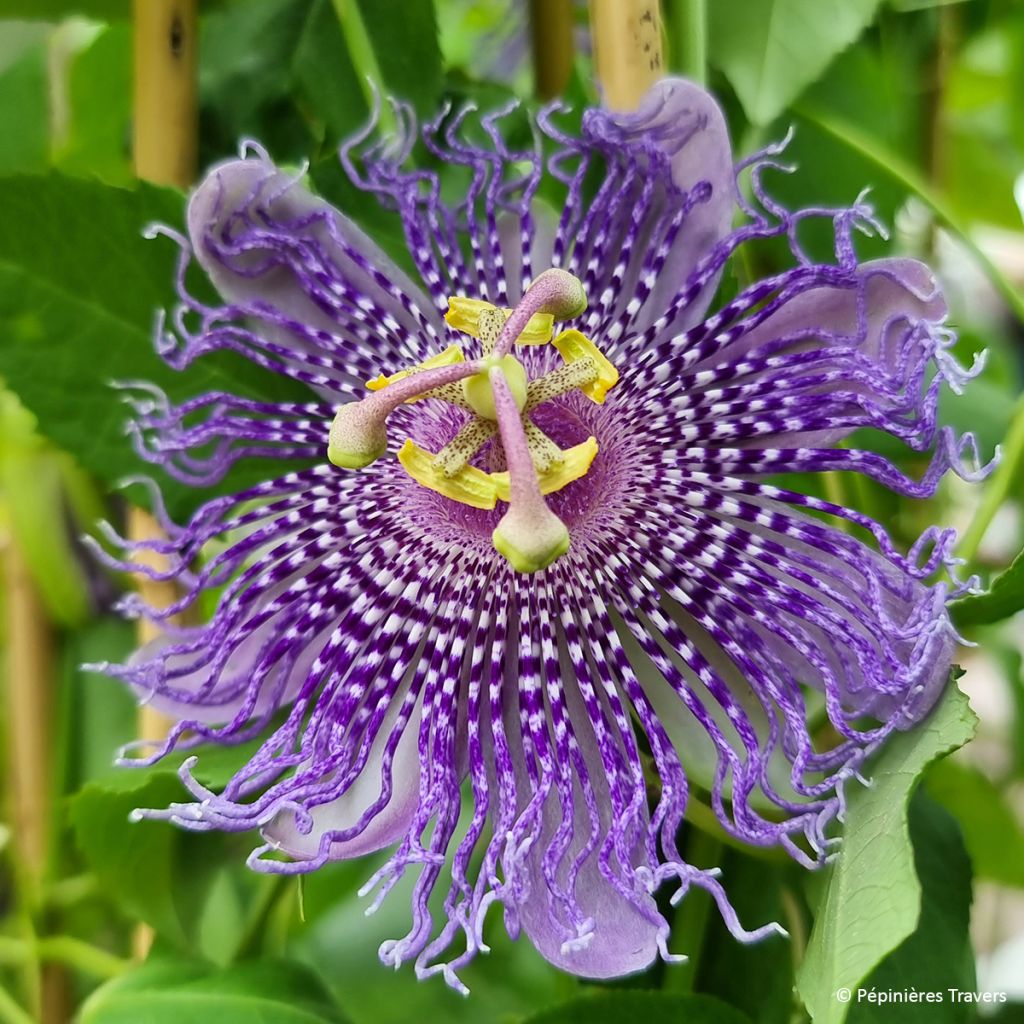

Passiflora Fata Confetto
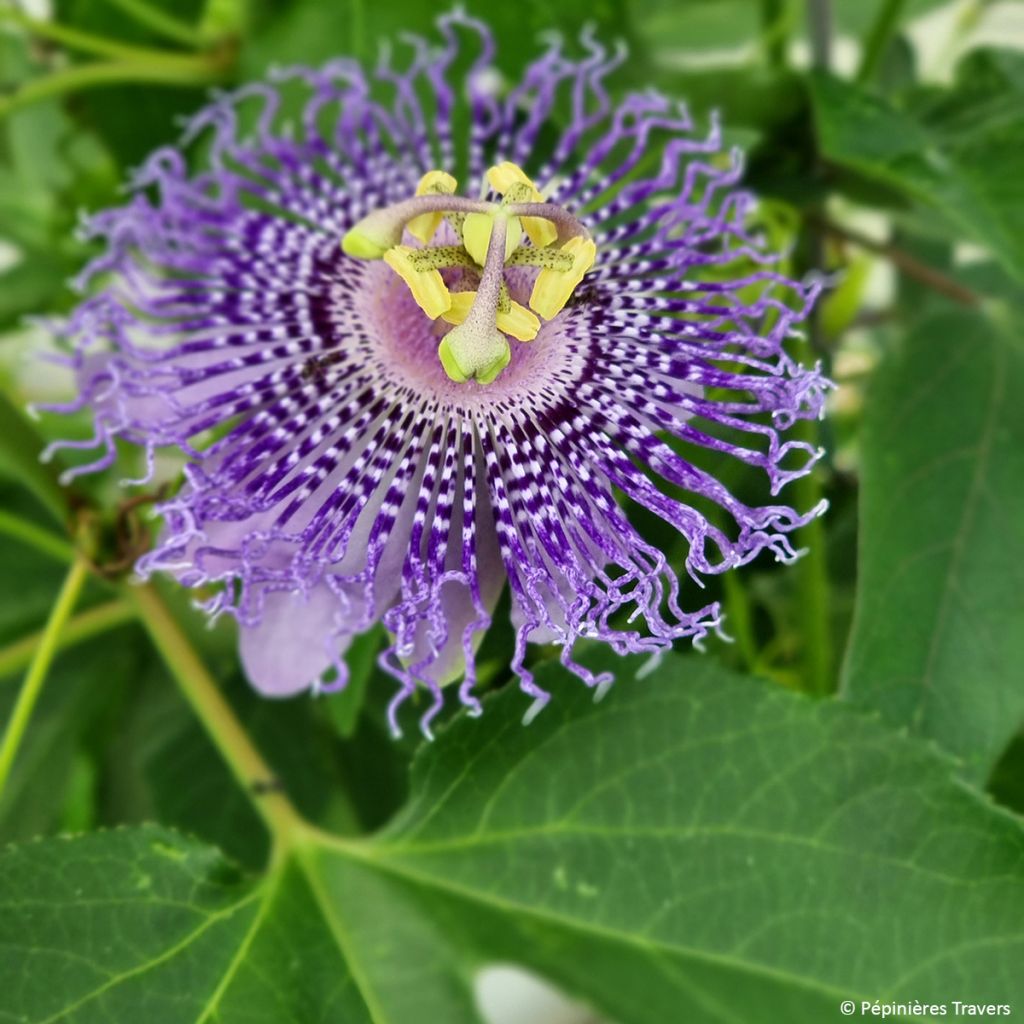

Passiflora Fata Confetto
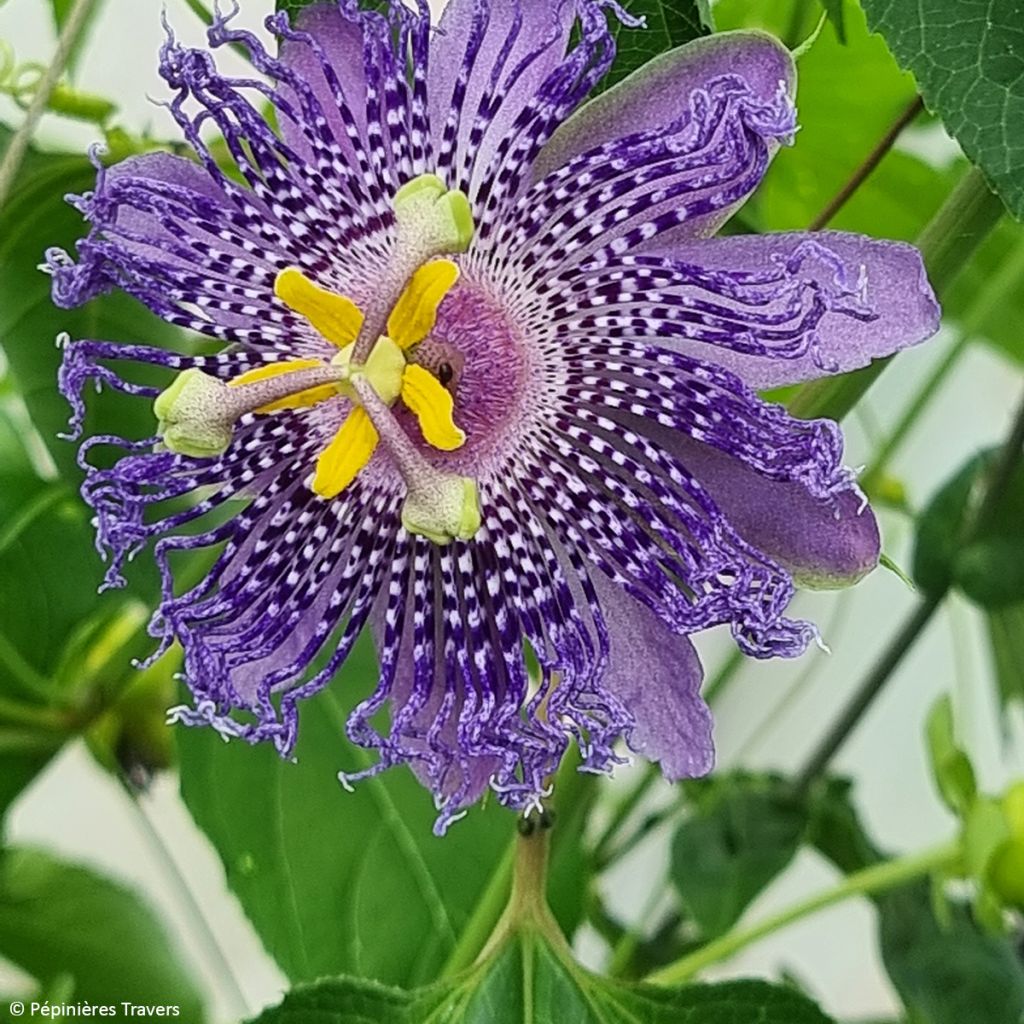

Passiflora Fata Confetto
Passiflora Fata Confetto
Passiflora x incarnata Fata Confetto
Maypop, Purple Passionflower
Why not try an alternative variety in stock?
View all →This plant carries a 6 months recovery warranty
More information
We guarantee the quality of our plants for a full growing cycle, and will replace at our expense any plant that fails to recover under normal climatic and planting conditions.
From €5.90 for pickup delivery and €6.90 for home delivery
Express home delivery from €8.90.
Does this plant fit my garden?
Set up your Plantfit profile →
Description
The 'Fata Confetto' Passionflower is a hybrid variety appreciated for the beauty of its flowers as well as the taste quality of its fruits. It is also among the most hardy fruit varieties. Derived from Passiflora x incarnata, it offers large, fragrant purple flowers, followed by round fruits that are yellow-orange when ripe, more flavourful than the species, with a sweeter taste and a slight hint of acidity. The passionflower requires well-drained, not too dry soil and heat in summer to bloom, and not too wet soil in winter.
Mostly native to tropical areas of South America, passionflowers belong to the large family of Passifloraceae, which includes 400 species and numerous spontaneous or horticultural hybrids. Passiflora incarnata is a wild species native to the southeastern United States and Mexico. The 'Fata Confetto' variety is a 2006 creation by Italian Maurizio Vecchia, it is a hybrid between Passiflora 'Guglielmo Betto' and Passiflora cincinnata 'Dark Pollen'.
The 'Fata Confetto' Passionflower has a perennial crown that produces new twining stems each spring. The vegetation completely disappears in winter. The well-branched stems cling to their support with tendrils, reaching a height of 3m in one season and disappear with the first true frost. They are adorned with smooth, thick leaves, 8-12cm long by 7-11cm wide, divided into 3 lanceolate elliptical lobes with dentate margins, medium green on the upper side, traversed by light yellow veins. Its flowering period extends from June to October in favourable climates. Each stem bears 5 to 10, 8cm diameter, quite ephemeral flowers, constantly renewing on the plant. Its pleasantly fragrant flowers are formed by cream-white tepals. The fringed filaments of the crown are purple, striped with white. The heart of the flower is occupied by 5 tiger-striped stamens with yellow anthers and 3 mauve tiger-striped styles, united at the base. The unusual shape of the flower evolves: petals and sepals curve, while the crown of filaments folds and then straightens to avoid self-pollination. Once pollinated, the flowers produce edible egg-shaped fruits, measuring 5cm long. The translucent pulp is sweet, flavourful, and fragrant.
This Passionflower has crown hardy down to -12°C, after 2 or 3 years of cultivation. It is very important to protect the crown from cold and humidity during the first 2 winters. It thrives in all southern and Atlantic regions, venturing into well-protected inland gardens as well. It is used to dress walls, fences, porches, and trellises. When combined with an evergreen or winter-flowering climber, the decoration lasts all year round. Consider Clematis cirrhosa, for example. Plant it against a hedge, and it will decorate it with its flowers and fruits in summer. It is also lovely in conservatories, where it withstands very cold winters without damage.
Plant habit
Flowering
Foliage
Botanical data
Passiflora
x incarnata
Fata Confetto
Passifloraceae
Maypop, Purple Passionflower
Cultivar or hybrid
Other Passionflowers
Planting and care
The Fata Confetto passionflower is a sun and heat-loving plant, which should be sheltered from cold and drying winds. Plant it in ordinary, deep, well-worked and well-drained soil, moist in summer and not too wet in winter. Its crown is hardy to -12°C, so it can be planted in open ground in the south in the olive tree zone as well as along the entire Atlantic coast. Inland, it needs a protected position, with good winter mulching. Grow it on a support to hold the weight of vegetation. Secure its branches well on the support, as the vegetation is exuberant. Prune before winter to maintain a reasonable size and cut back the main branches to encourage growth. In early spring, remove dead branches near the crown. Beware of scale insects and whiteflies, as well as cucumber mosaic virus. Treat preventively.
Fruits will only form on the plant in the presence of another passionflower, through cross-pollination. They can be consumed while still green or barely tinged with yellow.
Planting period
Intended location
Care
This item has not been reviewed yet - be the first to leave a review about it.
Summer flowering climbers
Haven't found what you were looking for?
Hardiness is the lowest winter temperature a plant can endure without suffering serious damage or even dying. However, hardiness is affected by location (a sheltered area, such as a patio), protection (winter cover) and soil type (hardiness is improved by well-drained soil).

Photo Sharing Terms & Conditions
In order to encourage gardeners to interact and share their experiences, Promesse de fleurs offers various media enabling content to be uploaded onto its Site - in particular via the ‘Photo sharing’ module.
The User agrees to refrain from:
- Posting any content that is illegal, prejudicial, insulting, racist, inciteful to hatred, revisionist, contrary to public decency, that infringes on privacy or on the privacy rights of third parties, in particular the publicity rights of persons and goods, intellectual property rights, or the right to privacy.
- Submitting content on behalf of a third party;
- Impersonate the identity of a third party and/or publish any personal information about a third party;
In general, the User undertakes to refrain from any unethical behaviour.
All Content (in particular text, comments, files, images, photos, videos, creative works, etc.), which may be subject to property or intellectual property rights, image or other private rights, shall remain the property of the User, subject to the limited rights granted by the terms of the licence granted by Promesse de fleurs as stated below. Users are at liberty to publish or not to publish such Content on the Site, notably via the ‘Photo Sharing’ facility, and accept that this Content shall be made public and freely accessible, notably on the Internet.
Users further acknowledge, undertake to have ,and guarantee that they hold all necessary rights and permissions to publish such material on the Site, in particular with regard to the legislation in force pertaining to any privacy, property, intellectual property, image, or contractual rights, or rights of any other nature. By publishing such Content on the Site, Users acknowledge accepting full liability as publishers of the Content within the meaning of the law, and grant Promesse de fleurs, free of charge, an inclusive, worldwide licence for the said Content for the entire duration of its publication, including all reproduction, representation, up/downloading, displaying, performing, transmission, and storage rights.
Users also grant permission for their name to be linked to the Content and accept that this link may not always be made available.
By engaging in posting material, Users consent to their Content becoming automatically accessible on the Internet, in particular on other sites and/or blogs and/or web pages of the Promesse de fleurs site, including in particular social pages and the Promesse de fleurs catalogue.
Users may secure the removal of entrusted content free of charge by issuing a simple request via our contact form.

































